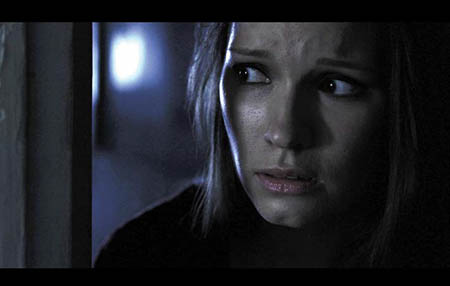Blackness: A Three-Tiered Approach

Jay Holben When I first made the move to Los Angeles to pursue my career in film, my two roommates were huge fans of “The X-Files.” It was early spring of 1995 and the Chris Carter series was just getting into its second season. My roommates had recorded each episode onto VHS tapes and insisted I catch up before starting to watch the new shows with them. I, too, became enamored with the series—not just the adventures of Fox Mulder and Dana Scully as they searched for truth of the paranormal— but in the work of Canadian Cinematographer John S. Bartley, CSC and his gaffer, David Tickell.
“The X-Files” was one of the first shows I had ever seen take a truly cinematic approach to primetime television and Bartley (and, indeed, Fox, as well) wasn’t afraid of “dark.” Real dark. Blacks like I had never seen on television. That was a part of the show’s appeal—a courageous approach to the photography and lighting that really drew you in.
Christopher Probst, now a fantastically successful cinematographer, was one of my roommates and my good friend. He and I dissected Bartley’s work on “The X-Files” ad nauseam. We, too, wanted to learn the tricks of the trade to making night look so beautiful, so enticing, so terrifying.

Actress Debbie Diesel peeks around the corner trying to avoid trouble in this shot, another example of the three-tiered approach to night lighting as inspired by “The X-Files.”THREE-POINT LIGHTING
As much as I hate to discuss three-point lighting (what I often call “lighting by numbers”), we discovered a true three-step approach to Bartley’s night that has proved successful throughout my entire photographic career.
It starts with edge light. For some reason, moonlight—or dim light or even “no light”—is always backlight. It always seems to play best as a hot 3/4 edge on characters. Perhaps it is convention that’s been born over years of imagery—or perhaps it’s because our eyes will open to let in more light on the faces of the people we’re relating to—that background lighting goes hotter naturally. It is a real phenomenon you can observe very simply. Life is full of hot edges. But don’t take my word for it. Keep your eye open (literally) and you’ll see.
So that was part 1: Edge light your talent. It then moves to backlight, or rather “background” light. It helps considerably if elements of the background are hotter than the foreground, for sure. Bright details in the darkness help stop the eye down and perceive blackness better.
Bartley’s dark world of “The X-Files” was filled with bright, moonlit walls behind silhouette characters; piercing blue moonlight peeking through the leaves of the trees.
Finally, a little soft, heavily underexposed front fill to just bring out the details in your actor’s shadow sides a little bit. This is generally accomplished with a large bounce— at least a 4 feet x 4 feet, but I often try to go more for an 8 feet x 8 feet. This should be at least two stops under key to just barely bring out details. Further, while the backlight and edge light can be cool, the soft front fill should be neutral in color. This color contrast goes a long way toward selling the feeling.
The combination of these three techniques creates such a convincing nighttime look that I’ve turned to it again and again in the intervening years. It’s not anything that is truly extraordinary, really. It’s a pretty basic approach, but I can credit Cinematographer John Bartley and “The X-Files” for opening my eyes to the beauty of darkness and how to light for dark.

Douglas Langdale, playing Agent Fulmer, examines possible evidence of the paranormal in the TNT Area of West Virginia in Mothman, an early example of my Bartley-esque night lighting.‘MOTHMAN’
My first big project after this revelation was a feature film called “Mothman” that we shot on-location in Point Pleasant, W. Va. Much of the story takes place in the forest area outside of the small town (dubbed the “TNT Area” for the hidden munitions depots that were formerly used by the U.S. military scattered about the forest). Armed with my knowledge of what Bartley had (inadvertently) taught me, I approached my night sequences with the same three-stage process.
Backlight—Generally with an 18K HMI on a parallel off in the distance; spread wide to cover most of the background with a swath of bright blue “moonlight.”
Edge light—With a closer HMI, generally a 200W Joker or a 575W PAR; I’d add the 3/4 edge to my characters, making this a hot edge, about a stop-and-a-half to two stops over key.
Finally, the soft front fill—Out in the forest, this was often a 4 foot x 4 foot beadboard bounce with a 650W Tweenie bounced into it. I also tried to keep this low, below actor’s eyelines. It is dim enough and soft enough to be almost “sourceless.”
Therein lies my approach to dark. Thanks to some cutting-edge primetime television, it’s a technique I’ve used again and again throughout my career.
Jay Holben is the author of the book “A Shot in the Dark: A Creative DIY Guide to Digital Video Lighting on (Almost) No Budget.”
Get the TV Tech Newsletter
The professional video industry's #1 source for news, trends and product and tech information. Sign up below.
